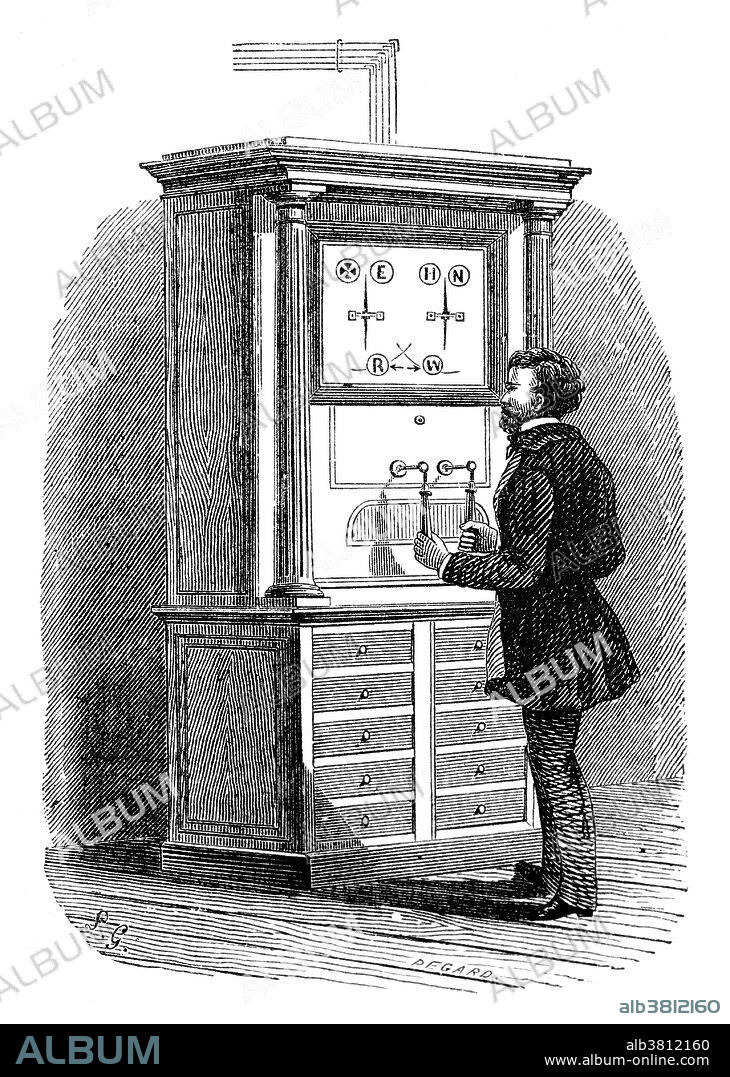alb3812160
Cooke and Wheatstone Two Needle Telegraph, 1830s

|
Añadir a otro lightbox |
|
Añadir a otro lightbox |



¿Ya tienes cuenta? Iniciar sesión
¿No tienes cuenta? Regístrate
Compra esta imagen

Título:
Cooke and Wheatstone Two Needle Telegraph, 1830s
Descripción:
Ver traducción automática
The Cooke and Wheatstone telegraph was an early electrical telegraph system invented by English inventors William Fothergill Cooke and Charles Wheatstone. The receiver consisted of a number of needles which could be moved by electromagnetic coils to point to letters on a board. This feature was liked by early users who were unwilling to learn codes, and employers who did not want to invest in staff training. The two-needle telegraph required three wires, one for each needle and a common return. The coding was somewhat different from the five-needle telegraph and needed to be learned, rather than read from a display. The needles could move to the left or right either one, two, or three times in quick succession, or a single time in both directions in quick succession. Either needle, or both together, could be moved. This gave a total of 24 codes, one of which was taken up by the stop code. Three letters were omitted: J, Q and Z, which were substituted
Personas:
Crédito:
Album / Science Source
Autorizaciones:
Modelo: No - Propiedad: No
¿Preguntas relacionadas con los derechos?
¿Preguntas relacionadas con los derechos?
Tamaño imagen:
3100 x 4350 px | 38.6 MB
Tamaño impresión:
26.2 x 36.8 cm | 10.3 x 14.5 in (300 dpi)
Palabras clave:
AGUJA • ARTE • CHARLES • CIENCIA • COMUNICACION • DIBUJO • DOS • ELECTRICIDAD • EUROPEO • FAMOSO • GRABADO • HISTORIA • HISTORICO • ILUSTRACION • IMPORTANTE • INGLES • INVENCION • LOUIS • MASS • OBRA DE ARTE • SIGLO XIX • SIGLO • SISTEMA • TECNOLOGÍA • TECNOLÓGICA
 Pinterest
Pinterest Twitter
Twitter Facebook
Facebook Copiar enlace
Copiar enlace Email
Email
